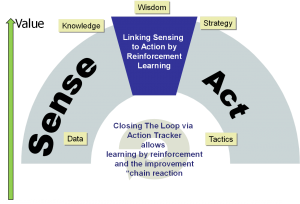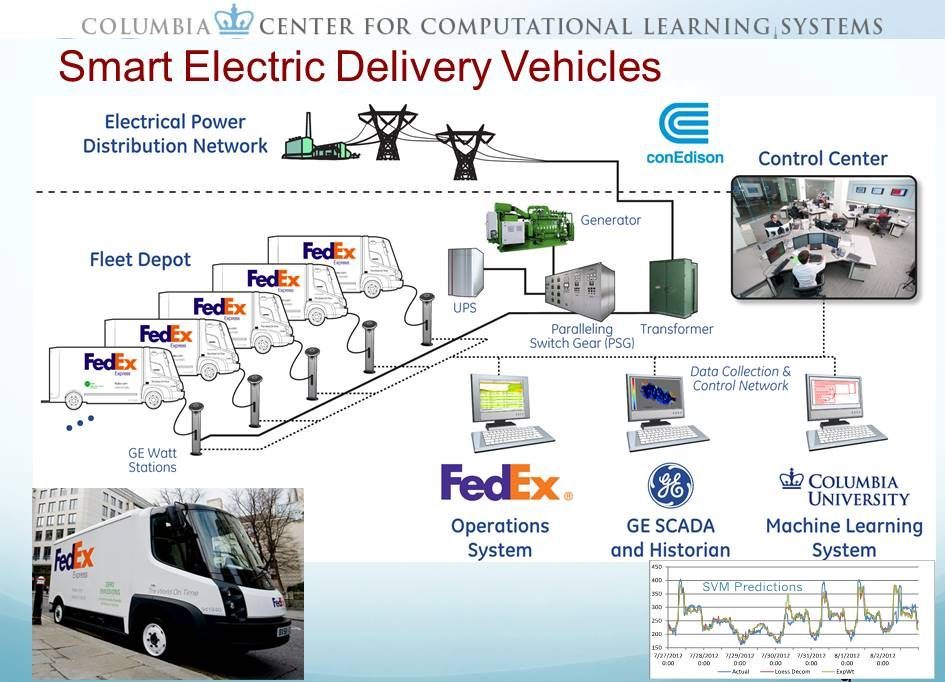Putting the Smarts in Cities, Buildings, and Electric Grids
| Technical briefs of our IP available for licensing are now online. Check out, “Predictive building management system for improved energy efficiency in smart buildings” |
| If you are interested to sponsor research on a Smart-X topic, email agb6 at columbia dot edu |
| Reports produced by our group available at Columbia’s Academic Commons |

The Smart-X Group is within the Center for Computational Learning Systems at Columbia University and is part of the Data Science Institute. Albert Boulanger leads the group.
Our group had a start with Roger Anderson’s and Albert Boulanger’ s work on Computer Aided Lean Management (CALM) concepts developed for the Energy Industry, summarized in this 2007 tutorial. This lead to the book Computer-Aided Lean Management for the Energy Industry authored by Roger N. Anderson, Albert Boulanger, John A. Johnson, and Arthur Kressner (out of print, but available digitally on Google Play).
 We realized, in looking at the nature of the Energy Industry where many of the assets are in the “last mile”, that completing the arch in decision support systems entails learning how to go from problems to solutions over a time horizon which indicated approximate dynamic programming or reinforcement learning type of algorithms were appropriate. One concept we developed early-on in this vein was ThreatSim, described in this Smart Grid White Paper The idea is to use approximate dynamic programming to learn policies that mitigate threats to systems. Threats could be cyber-attacks or climate change threats, etc.
We realized, in looking at the nature of the Energy Industry where many of the assets are in the “last mile”, that completing the arch in decision support systems entails learning how to go from problems to solutions over a time horizon which indicated approximate dynamic programming or reinforcement learning type of algorithms were appropriate. One concept we developed early-on in this vein was ThreatSim, described in this Smart Grid White Paper The idea is to use approximate dynamic programming to learn policies that mitigate threats to systems. Threats could be cyber-attacks or climate change threats, etc.
This led to several projects with Consolidated Edison using machine learning and statistics to study failures on their distribution system and to make failure susceptibility predictions actionable with several decision support applications. This work is summarized in the paper Machine Learning for the New York City Power Grid
 We were a thought leader in a Dept. of Energy funded Con Edison-led Smart Grid project. Our research for this project was to apply Dynamic Treatment Regimes to formulate optimized repair policies of power distribution components and other research entailed using Approximate Dynamic Programming for optimizing load curtailment decisions in distribution networks.
We were a thought leader in a Dept. of Energy funded Con Edison-led Smart Grid project. Our research for this project was to apply Dynamic Treatment Regimes to formulate optimized repair policies of power distribution components and other research entailed using Approximate Dynamic Programming for optimizing load curtailment decisions in distribution networks.
From our Con Edison work, we branched out to other Smart Cities and Smart Buildings projects:

- The CCLS submission “Creation of a Columbia Machine Learning System to Optimize the Recharging of Electric Delivery Vehicles in Large Urban Cities” was chosen as the “Winning University Program” in General Electric’s Ecomagination Innovation Challenge of 2010. This project involved FedEx, GE, Con Edison, and Columbia University and studied optimal charging schedules for electric delivery vehicles in a lower Manhattan FedEx depot. The project is described in the paper, Cost-optimal, robust charging of electrically-fueled commercial vehicle fleets via machine learning
- Development of the Total Property Optimizer for a commercial smart building management product called Di-BOSS (see also this paper).
- A review paper on Electric Vehicles: Vehicle electrification: Status and issues
- Studies of Opportunistic Vehicle to Vehicle Charging using magnetic induction
- A study for the UTRC on Optimal Placement of Inductive Chargers for an MTA bus route.
- Approximate Dynamic Programming based microgrid controller for Vijay Modi’s Africa Microgrid Millennium Villages project, SharedSolar
Finally, our work with Con Edison continues. We are doing a cost vs. benefit analysis using causal inference of Con Edison programs concerning their secondary distribution networks and developing image analysis tools for thermal imaging inspections of underground structures for Con Edison.
Contact agb6 at columbia dot edu.
Follow Us!